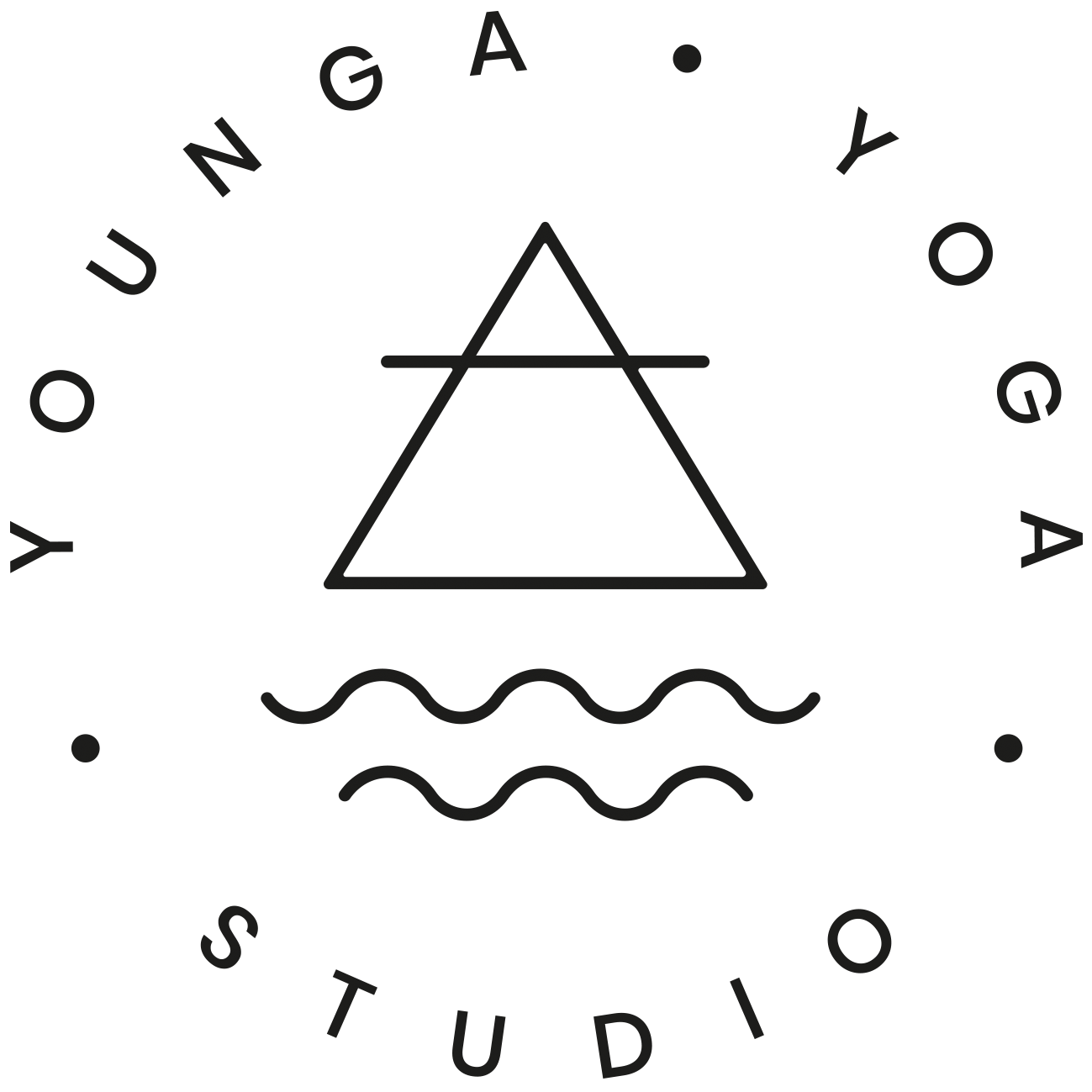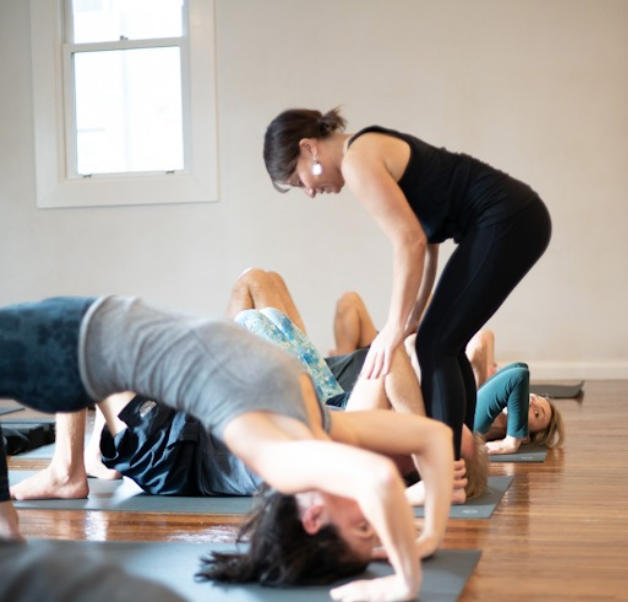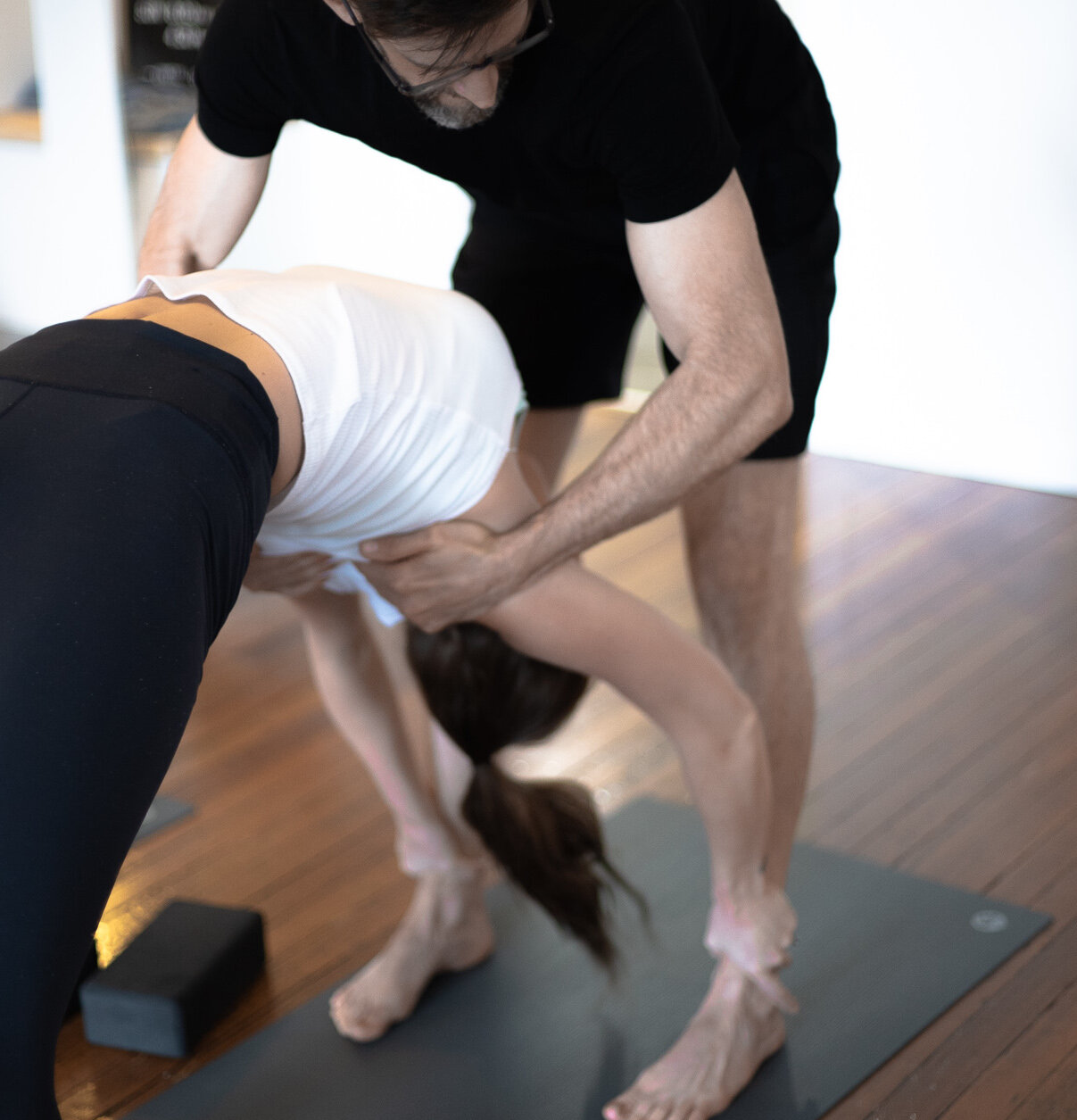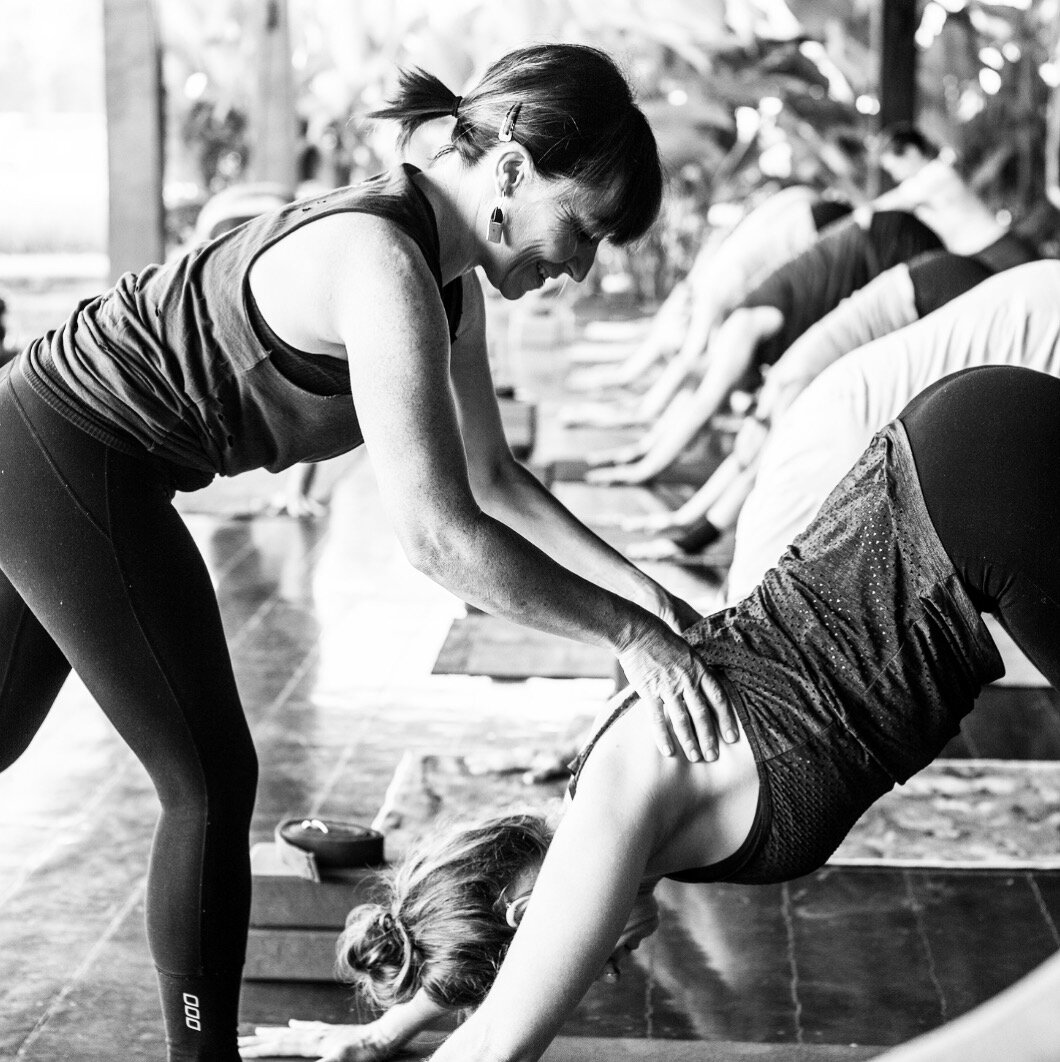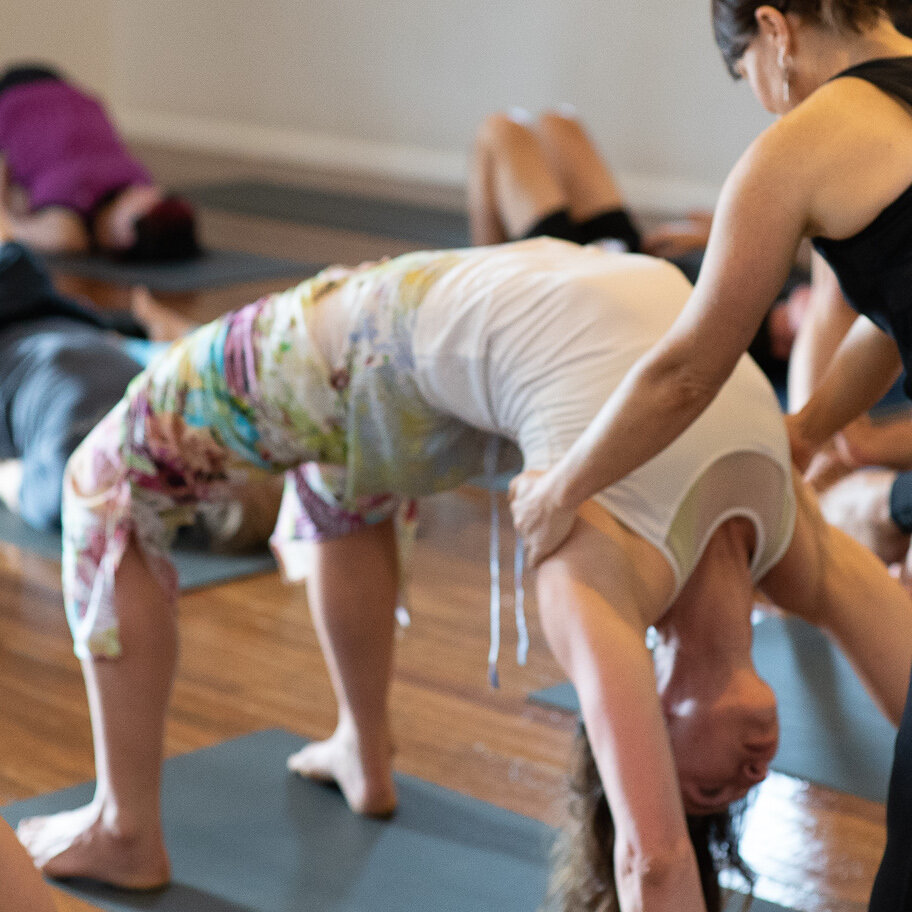THE POWER OF HANDS ON ASSISTS
HAVE YOU MISSED HANDS-ON ASSISTS AS MUCH AS WE HAVE?
This was the question we asked our Instagram followers this week and an overwhelming 92% of folks replied YES….
If you’re new to the studio in the past year - then you might not even know about hands-on assists!
So in this quick blog post we thought we’d explain a little bit about hands-on assists - what they are - and how they can be beneficial.
WHAT ARE HANDS-ON ASSISTs?
Hands-on assists are a teaching tool we use in yoga (with consent from you - the student) to help experience stability, alignment & expansion in the body. Not everyone likes or wants to be physically touched which is totally fine - we view hands-on assists in a similar way to using props. You can choose whether this tool adds to your experience and the choice is always yours!
But for many students who learn through proprioception, or need to experience something in their body before they can remember or replicate it on their own… hands-on assists can be super powerful. There are also hands-on assists that are used to invite an element of relaxation into the practice (like a gentle neck release in savasana)… so not all assists are used to refine technique.
Some days you might find this adds to your practice and sometimes you might find it pulls you ‘out of the zone’… so we encourage you to opt-in or opt-out as you prefer.
5 ways hands-on assists may enhance your yoga practice
There are all kinds of assists - and they each have a different purpose. Here are 5 different reasons we commonly use hands-on assists in the studio setting.
> to provide stability in postures such as balances & inversions
> to provide a sense of proprioception to muscles that need to engage
> to help reduce tension
> to find a sense of expansion in a posture
> to assist in refining alignment
SOME OF OUR FAVOURITE HANDS-ON ASSISTS
HIP PRESS IN CHILD’S POSE
Feels SO amazing if your lower back is tight as it is grounding and can help create a feeling of space and ease around the lumbar back. This is an assist we often use as a little ‘breather’ in the middle of an energising class, or in prenatal yoga to release lower back tension.
SCAPULA SQUEEZE
This is an assist I learned from my teacher Amy Ippoliti to bring awareness to upper back engagement in Downward Facing Dog or Adho Mukha Svanasana. Many students have a tendency to ‘dump’ the armpits toward the floor in this posture to try and find more opening. When we take our shoulders beyond a health range of motion - we invite injury. The scapula squeeze encourages the upper back to ‘switch on’ in order to strengthen key postural muscles of the back body. This simple action is really hard to activate on your own because we are so used to sitting and working on computers, but students who are able to activate their back in the this way usually report a feeling of better posture, better upper back strength and less strain on the shoulders.
HIP ANCHOR IN HALF MOON
This stabilising assist can help the wobbliest balance feel grounded. Have you ever tried to balance on one leg but then can’t seem to balance for long enough to feel focussed and grounded? In this simple assist (and others like it)… the teacher can help your body stabilise by providing gentle downward pressure - leaving you to focus on your breath and find length in your spine.
HANDSTAND ANCHOR
For those of you that love getting upside down but don’t feel steady one of our fav assists for handstand is to apply downward pressure to the feet like an anchor. The feeling is stabilising and expansive. We have a range of ways to ‘spot’ you in handstand. And while this posture can feel scary, it’s also a great one to try and ‘shake things up’. We never met anyone that nailed their first handstand and hated it…. so if you’re a bit hesitant just flag us down and we’ll come and give you some tips.
SAVASANA NECK TREAT
Maybe our most loved hands-on assist is the ‘neck treat’ in savasana. This delicious assist helps to release neck tension. Because your eyes are usually closed, we’ll always ask if you want to receive this adjustment by saying something like “If you’ve like a gentle neck release today - just place one hand on your belly until we come around to you”… often we’ll pair this with an essential oil or tension releasing balm as a way of inviting a spa-like experience for you to close your practice.
A TRAUMA INFORMED approach
At Younga Yoga, we provide consent cards, so you are able to inform us each time you visit what your preference is for hands-on assists. Through creating a safe space to practice - we believe that even for students with trauma, some assists can be beneficial. We have had many students comment over the years that receiving simple hands-on assists in a safe space has allowed them to self-regulate their feelings around touch. We will always respect your needs, which means that hands-on assists are always optional.
We use a handy card that you can complete at the beginning of your practice and simply tick your preference:
- yes please, I’d like hands-on assists
- please ask before touching
- no thanks
Let us know your thoughts in the comments below…. have you missed hands-on assists? What are your favorites?
